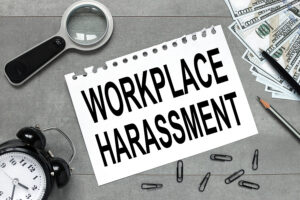Workplace harassment is a serious issue that affects employees across industries, leading to emotional distress, career setbacks, and toxic work environments. Many victims suffer in silence, either out of fear of retaliation or lack of awareness about their rights. Recognizing workplace harassment and knowing how to fight back is essential for creating safe, respectful, and productive workplaces.
Understanding Workplace Harassment
Workplace harassment is any unwanted behavior that creates a hostile or intimidating environment. It can be verbal, physical, psychological, or digital. The most common forms include:
- Sexual Harassment – Unwanted sexual advances, inappropriate comments, or requests for sexual favors.
- Verbal Harassment – Insults, slurs, or offensive jokes targeted at someone’s gender, race, religion, or background.
- Physical Harassment – Unwanted touching, intimidation, or physical violence.
- Psychological Harassment – Gaslighting, threats, or emotional manipulation.
- Cyber Harassment – Offensive emails, text messages, or social media threats from colleagues or superiors.
Harassment can come from anyone in the workplace—a boss, a coworker, a client, or even a subordinate. It often goes unreported due to fear of losing a job, damaging one’s reputation, or lack of confidence in the reporting system.
How to Recognize Workplace Harassment
Many victims fail to recognize harassment because they normalize inappropriate behavior. Here are key signs:
- You feel unsafe, uncomfortable, or disrespected due to someone’s behavior.
- You are constantly belittled, insulted, or humiliated.
- You face unwanted advances or inappropriate jokes about your gender, race, or identity.
- You are pressured into actions that violate your personal boundaries.
- Your work is sabotaged, or you are unfairly treated due to personal bias.
If any of these situations sound familiar, you may be experiencing workplace harassment.
How to Fight Back Against Workplace Harassment

1. Document Everything
Keep a record of all incidents, including dates, times, locations, people involved, and any witnesses. Save emails, messages, and any other evidence that supports your case.
2. Speak Up Immediately
If you feel safe, confront the harasser directly. A firm response like, “I find your behavior inappropriate, and I want it to stop,” can sometimes deter further harassment.
3. Report to HR or Management
Most workplaces have anti-harassment policies. Follow the official procedure for reporting harassment. If your company lacks proper policies, escalate the complaint to senior management or external legal bodies.
4. Know Your Rights
Many countries have strict laws against workplace harassment. Familiarize yourself with labor laws in your region and seek legal advice if needed.
5. Seek Support
Do not suffer in silence. Talk to a trusted colleague, mentor, or counselor. Support groups and employee unions can also provide guidance.
6. Take Legal Action if Necessary
If internal complaints are ignored, consider taking legal steps. Many organizations and human rights commissions offer free legal aid to workplace harassment victims.
Creating a Harassment-Free Workplace
Fighting workplace harassment is not just the victim’s responsibility—everyone plays a role. Organizations must:
- Implement strict anti-harassment policies and ensure all employees are aware of them.
- Train employees and managers on recognizing and preventing harassment.
- Encourage a culture of respect where employees feel safe to report concerns.
- Take swift action against offenders to set a precedent for zero tolerance.

